
TARGET 100317
The Library of Celsus
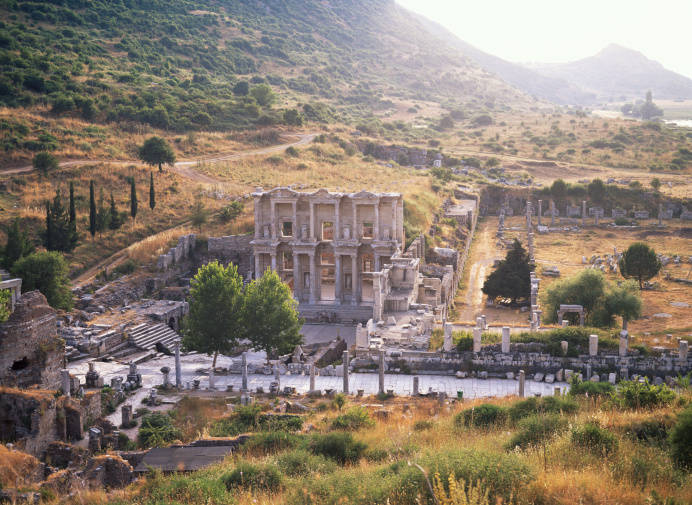
The Close of the Day at the Library of Celsus
In the area now known as Turkey, a wide marble road slopes down to one of the largest libraries of the ancient world. Between 12,000 and 15,000 scrolls were housed in the grand Library of Celsus in the Roman city, Ephesus.
The library was built in memory of Celsus Polemeanus, who was a Roman senator, General Governor of the Province of Asia in 115 AD, and a wealthy and popular citizen.
Celsus' son, Julius Aquila, began the construction in 110 AD. The library was completed by his successors 25 years later, in 135 AD.
Celsus was a great lover of books. His son built the library not only to serve as a repository for scrolls, but also to serve as a monumental tomb for Celsus. It was unusual to be buried within a library or even within city limits, so this was a special honor for Celsus. Celsus was buried beneath the ground floor in a lead container inside a marble tomb. A corridor behind the north wall leads to the vault.
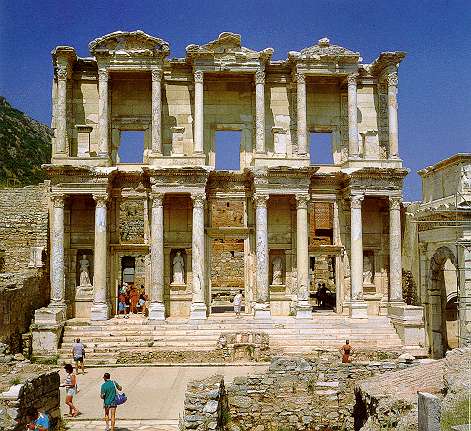
The restored main facade
After all these centuries, the library now stands in ruins, but the parts that remain still show the splendor of the once-great structure. The main facade, shown above, was partially restored, and the government of Turkey has tentative plans to restore the entire library.
The building is important as one of few remaining examples of an ancient Roman-influenced library. It also shows that public libraries were built not only in Rome itself but throughout the Roman Empire. In a massive restoration which is considered to be very true to the historic building, the front fašade was rebuilt and now serves as a prime example of Roman public architecture. (The Library of Celsus may serve as a model for other, less well preserved, libraries elsewhere in the Empire, for it is possible that literary collections were housed in other Roman cities for the benefit of students as well as traveling Romans. Such libraries may also have housed collections of local documents of interest if they were not destroyed during the Roman conquest.
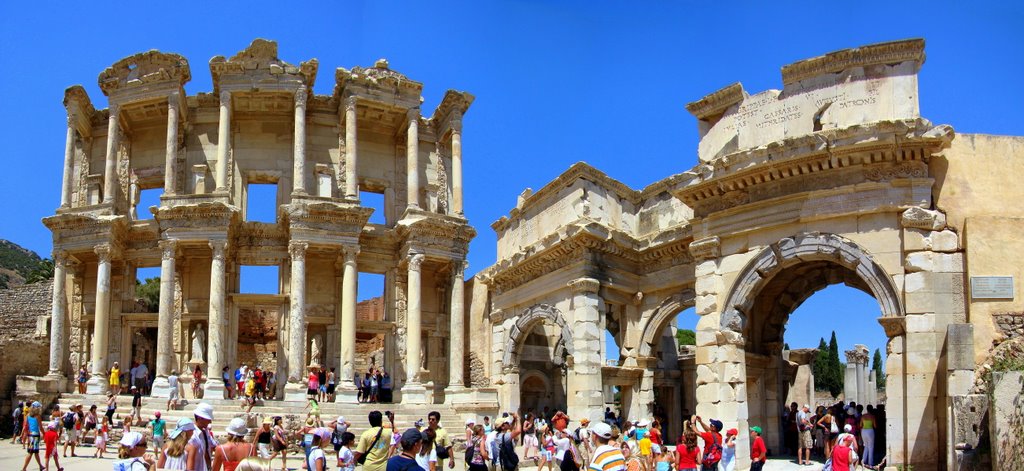
The main reception area (click to enlarge)
This type of facade with inset frames and niches for statues is similar to that found in ancient Greek theaters (the stage building behind the orchestra, or skene) and is thus characterized as "scenographic".
The building's other sides are irrelevant architecturally because the library was flanked by buildings.
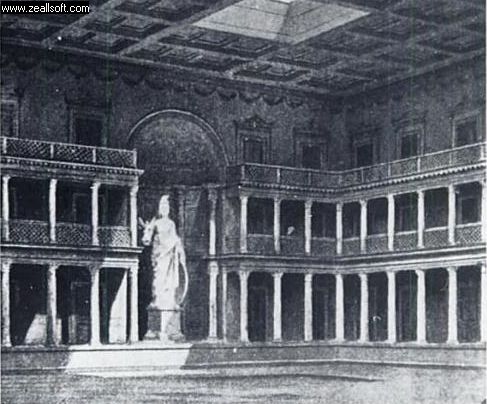
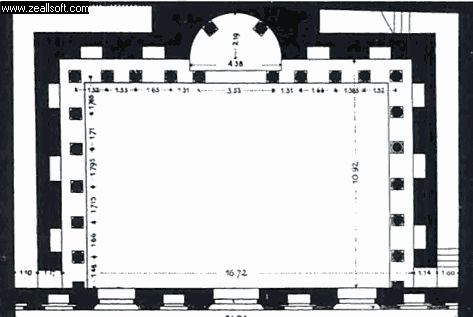
The 2 pictures above are from a book by Rudolph Heberdey, "Vorlaeudiger Bericht ueber die Ausgrabung in Ephesus".published in the Annual Publication of the Austrian Archeological Society, 1904.
The inside of the building, not fully restored, was a single rectangular room (measuring 17x11 m) with a central apse framed by a large arch at the far wall. A statue of Celsus or of Athena, goddess of truth, stood in the apse, and Celsus' tomb lay directly below in a vaulted chamber. Along the other three sides were rectangular recesses that held cupboards and shelves for the 12,000 scrolls. Celsus was said to have left a legacy of 25,000 denarii to pay for the library's reading material.
The second and third levels could be reached via a set of stairs built into the walls to add support to the building and had similar niches for scrolls. The ceiling was flat, and there may have been a central square oculus in it to provide more light for those reading inside.
For those advanced students who read the tasking, (please do so from now on - it's important for your level of work), here is a feedback map of the immediate area.
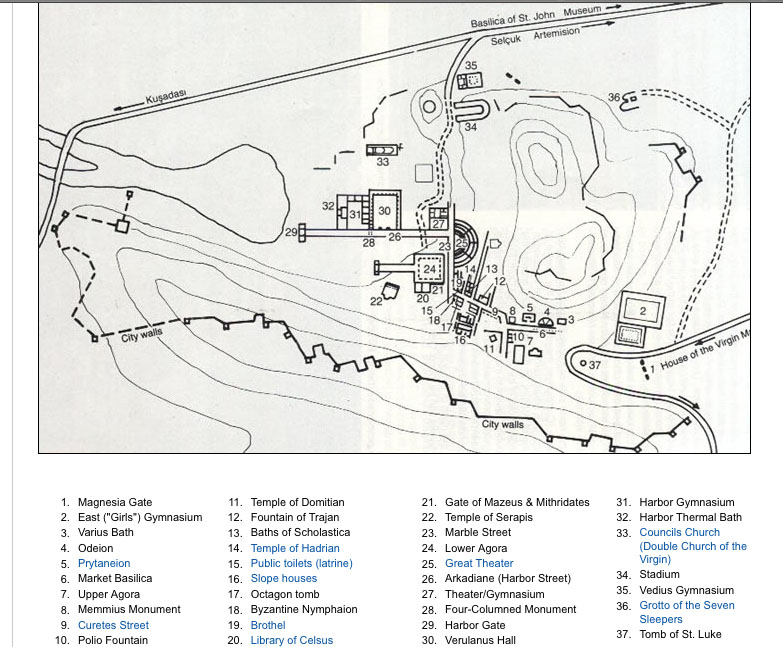
A map of the area
FEEDBACK MAP
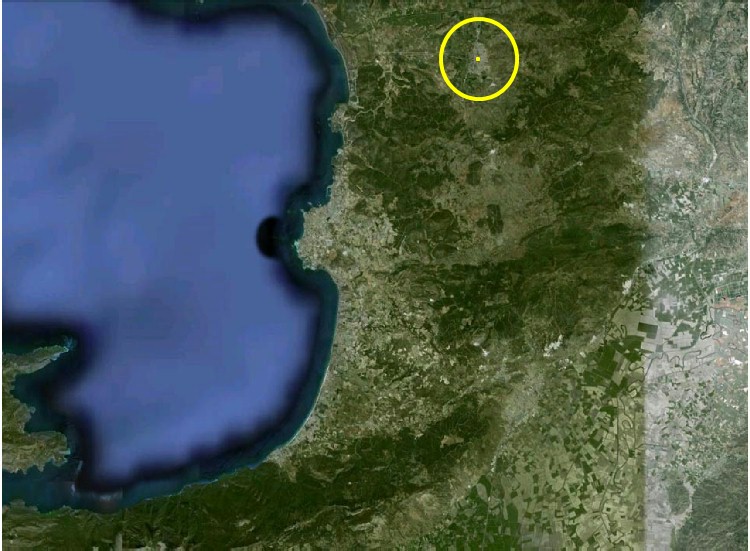
To learn more about the Library of Celsus, take a look at the following web sites:
About.com
Wikipedia
The Ephesus web site
Sacred Destinations web site
Kusadasi.biz -- Has several 360 degree interactive pictures of the area.
The Travels of Allyson Wucher -- Probably the most excellent set of pictures of the Library on the web.
A Grand Tour of Ephesus -- Complete information and photographs of the area.
Many thanks to Ray McClure for providing this target.